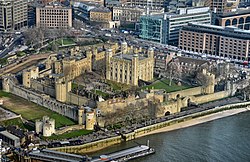 | |
| Abbreviation | HRP |
|---|---|
| Formation | 1989 |
| Legal status | Royal Charter Body |
| Headquarters | Hampton Court Palace |
| Location |
|
Region served | England and Northern Ireland |
| Membership | 167,799 (2023-24) |
Chair | Nicholas Coleridge |
Chief Executive Officer | John Barnes |
Main organ | Board of Trustees |
| Revenue | £134.4 million (2023–24) |
| Staff | 833 FTE (2023–24) |
| Volunteers | 800 |
| Website | www |
Historic Royal Palaces is an independent charity that manages the United Kingdom's unoccupied royal palaces:
Contents
- Constitution
- Governance
- Palaces and collections
- Palaces
- Collections
- Finances and commercial activities
- History
- Management of the unoccupied Royal palaces in the 19th and 20th centuries
- The formation of Historic Royal Palaces
- Historic Royal Palaces during the COVID-19 pandemic
- See also
- Notes and references
- Notes
- References
- Sources
- The Tower of London
- Hampton Court Palace
- The State Apartments and Orangery at Kensington Palace
- The Banqueting House, Whitehall
- Kew Palace with Queen Charlotte's Cottage and Great Pagoda at Kew Gardens
Historic Royal Palaces is also responsible for Hillsborough Castle in the north-west of County Down, the King’s official residence in Northern Ireland.
Historic Royal Palaces has managed the London palaces since 1989, and Hillsborough Castle since 2014. Occupied royal palaces, such as Buckingham Palace and Windsor Castle, are maintained by the Royal Household Property Section, and some are open to the public.














